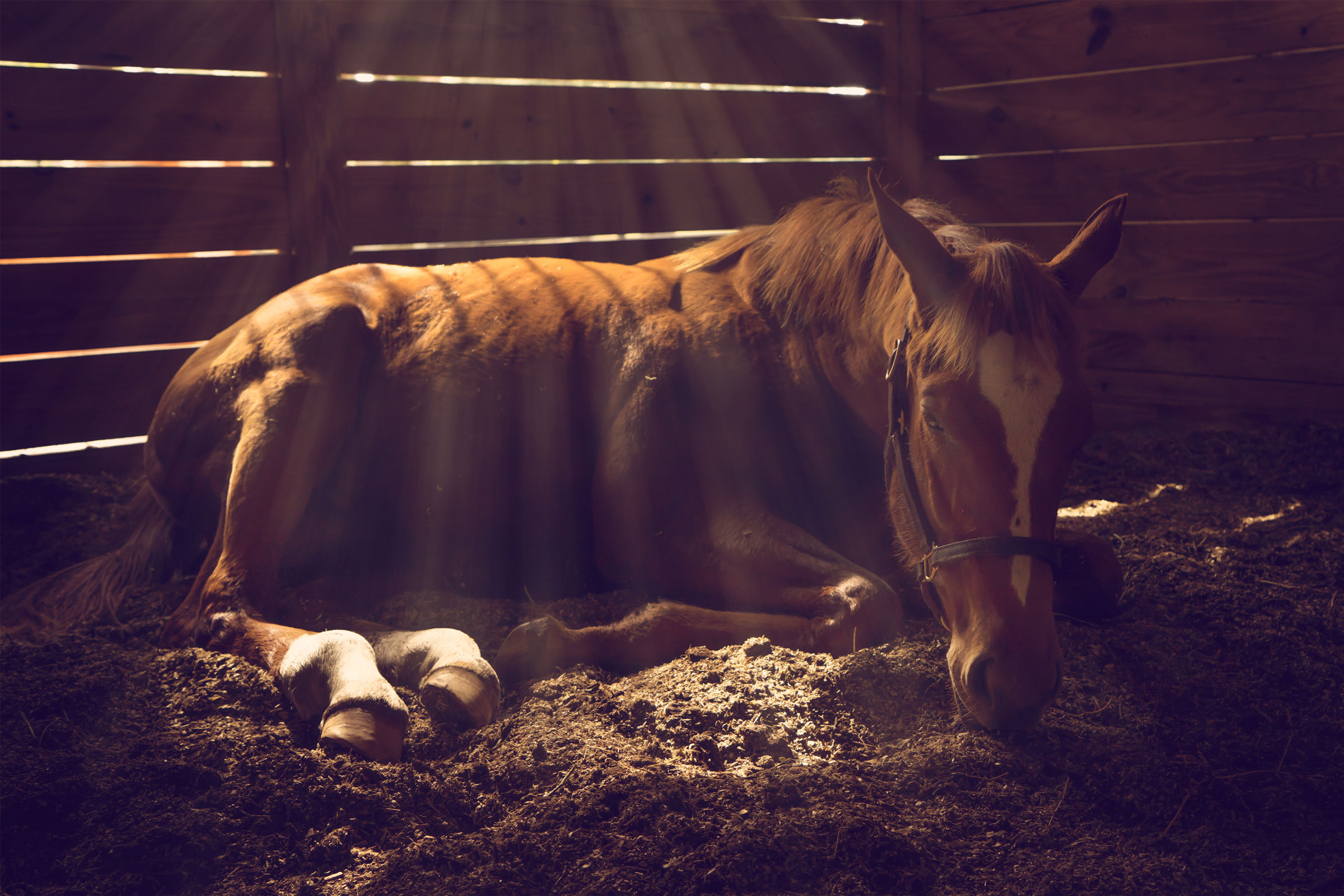
Equine Coronavirus was first discovered in Japan several years ago. The virus quickly spread to Europe, and testing for the virus began in 2010 in the U.S. Since then, the number of positive cases in the U.S. has been steadily increasing.
Equine Coronavirus is most commonly diagnosed in the winter months (October through April). Once a horse is exposed to the virus, it takes approximately 2 to 3 days for the infected horse to start showing clinical signs.
One study showed, however, that only 30% of infected horses become visibly ill. Of the horses that are detectably ill, nearly all initially develop a fever. Lethargy (sluggishness and dullness), anorexia (inappetance) and dehydration often follow. Rarely, ill horses will develop signs of colic and/or diarrhea. These clinical signs can present in horses of all ages; however, the disease is most commonly seen in older horses.
It also has been suggested that ponies and miniature horses might be more severely affected by Equine Coronavirus infection, with illness progressing to endotoxemia, sepsis and/or neurologic signs (head pressing, circling, incoordination and seizures).
The easiest, most common diagnostic test is submission of a manure sample for fecal Polymerase Chain Reaction (PCR) testing. PCR testing detects the presence of viral DNA in the feces. A veterinarian might run blood tests (complete blood count and chemistry profile), particularly if the horse has a fever or diarrhea, to evaluate the degree of infection and inflammation, electrolyte derangements, and the health status of the kidneys and liver (which can be affected indirectly by systemic illnesses such as Equine Coronavirus).
It should be noted that one study showed that the number of viral organisms present in the animal’s feces might be directly related to the horse’s prognosis. For example, horses with higher concentrations of viral organisms in the feces might have a decreased chance of survival. At this time, however, there is no easy or cost-effective way to measure fecal viral load in horses.
The disease itself can last a few days to a week (or two), depending on the progression of the disease and response to therapy. Treatment of horses with Equine Coronavirus infection is supportive care and includes anti-inflammatory medications, oral and/or intravenous fluids (with or without electrolyte supplementation) and other adjunctive therapies to prevent progression or complications of the disease.
Horses might be infected through fecal-oral transmission. This does not, however, require direct access to another horse’s manure. A horse can become infected if it comes into contact with the virus in contaminated fecal material present on tack, grooming equipment, boots, hands or other shared items.
Aerosolization of the virus might also play a role in transmission of the virus from horse to horse. Transmission of the virus is not fully understood, as horses that live in solitude (with no known exposure to other horses, their manure or contamination items) can still develop the disease.
Both visibly ill horses and asymptomatic carriers can spread the virus via any of the above-mentioned methods. Additionally, no vaccine exists for prevention of the virus. As such, proper infection control measures must be put in place, including appropriate management of waste and the use of boots, gloves and separate equipment to handle and treat the contagious horse.
Isolation of ill horses is key. Isolation for 21 days is recommended, as that is the average length of time for which an infected horse will shed Equine Coronavirus in its feces. A repeat fecal PCR is recommended to determine when the horse is no longer shedding the virus prior to reintroducing it to the herd.
Equine Coronavirus is a newly recognized disease in horses in the U.S. As such, there is still much to learn about the disease, including the prevalence of the disease. For horses showing any of the aforementioned signs, or for more information regarding this disease, please contact the University of Minnesota Equine Center at 612-625-6700.


